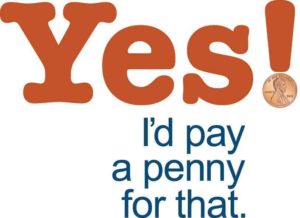No one wants to pay more taxes, but sometimes it really is the best of the bad options.
When Johnson County voters flip their ballots this November, they’ll be asked if they are willing to increase sales tax by a penny for each dollar spent. If your gut instinct is similar to mine, the pencil will immediately gravitate toward the “no” oval.
Sales taxes are among the most regressive rate options for revenue generation. Because they are levied at a flat rate, and because spending as a share of income falls as income rises, sales taxes inevitably take a larger share of income from low- and middle-income families than they take from those in higher income brackets. In other words, all saved income is exempt, while all spent income is taxed. Families who spend most or all of their income will be taxed at a higher rate than those who do not.
For this very reason, I’m a stickler on sales tax proposals. Officials who want me to take a second look need to very clearly explain why the funds are needed so badly that they are willing to allow the middle-class and poor to carry a greater burden.
Johnson County officials haven’t completely made that case; however, it is important to note that they did not and have not forced the discussion.

In 2013, the Iowa Legislature, at the prompting of Gov. Terry Branstad, moved forward with significant property tax reforms. Commercial property taxes, which are not eligible for the homestead exemption provided to residential property, were reduced. Those properties will be taxed at 95 percent of their valuation this year and at 90 percent next year. Understanding this would be a burden on local governments, Branstad and lawmakers agreed to insert an also increasing backfill as a standing appropriation.
While lawmakers and the Governor have in the past chosen not to fund a standing appropriation — designations for REAP are a good example — during recent conversations with The Gazette Editorial Board, Branstad was very clear that he will override any legislative attempts to circumvent the promised backfill.
A lesser discussed portion of the reform, however, concerns multifamily residential property. Before the 2013 reforms, these properties — apartment complexes and assisted living facilities, for instance — were on commercial tax roles. This is no longer the case. Beginning in fiscal year 2017, these properties will be reclassified and taxed on the residential roles. As it is phased in over an 8 year period, taxes on such properties will be roughly reduced by half. And, of special interest to Iowa communities with a significant number of such properties, the state has promised no backfill of this reduced revenue stream.
Other pieces of the property tax reform bill — residential growth limits and telecommunication property exemptions, for example — also negatively impact Johnson and other counties, but not to the extent of the move of multifamily properties to the residential tax roles. While Branstad was adamant to note that the transfer of multifamily properties to the residential tax roles was not a part of his original property tax reform plan and something he said Senate Democrats championed, he was also quick to note that he supported the switch.
Is there a possibility that the state will set up a new property tax bracket for residential property that is not owner-occupied? Although I asked the question three times, Branstad never answered it directly. He’d like to see residential lease agreements adopt the common commercial practice of “net” or “net-net” (double net) in which tenants are responsible for property taxes and, in the case of “net-net,” insurance premiums.
Without some sort of changes or movement by landlords, it is unrealistic to assume lowered property tax bills will automatically translate to lowered rent or lease payments. Currently, Branstad said, the state has no plans to monitor rent and lease costs to see if the property tax savings are trickling down.
Over the course of 10 years, the City of Iowa City alone will have between $37 million and $50 million zapped from its budget as a result of state property tax reforms. The low number is if the state follows through on its promise to backfill the commercial property reductions; the high number is if it does not.
While each jurisdiction in Johnson County decides how it would spend LOST revenues (a full list of planned uses by jurisdiction is available on the County Auditor’s website), the five contiguous cities — Iowa City, Coralville, North Liberty, University Heights and Tiffin — will vote as a block and a simple majority of voters within the block must approve passage. All other jurisdictions and unincorporated areas vote separately.
It’s been estimated the tax would provide roughly $17 million per year for the entire county.
The choice is between reduced services and/or infrastructure as a result of lower local revenues, or approving a regressive rate tax. Neither choice is ideal, but the fact that Iowa exempts some necessary purchases from sales tax helps ease the blow. Currently, most groceries and prescription medications are exempt from sales tax. Food purchased at restaurants or over-the-counter medications would be subject to sales tax. There are literally hundreds of things exempt from sales tax in Iowa, but many aren’t purchases an everyday family would make.
So, here’s hoping if you are still disgruntled about Johnson County LOST you’ll join me in holding your nose long enough to flip the ballot and mark the “yes” oval. Afterward, I’m sure we can track down a state lawmaker or two for lively discussions.
This column by Lynda Waddington originally published in The Gazette on Oct. 26, 2017.
